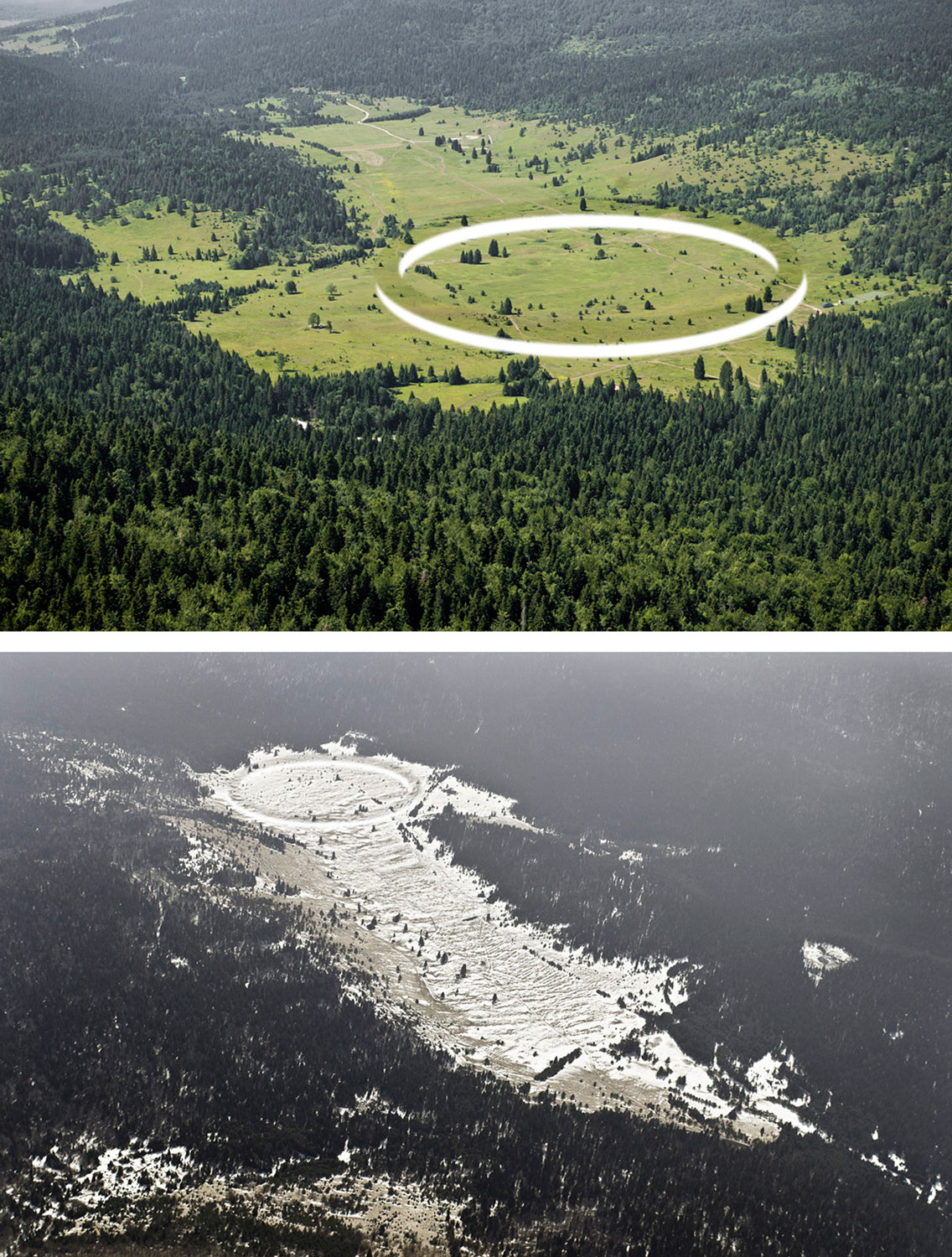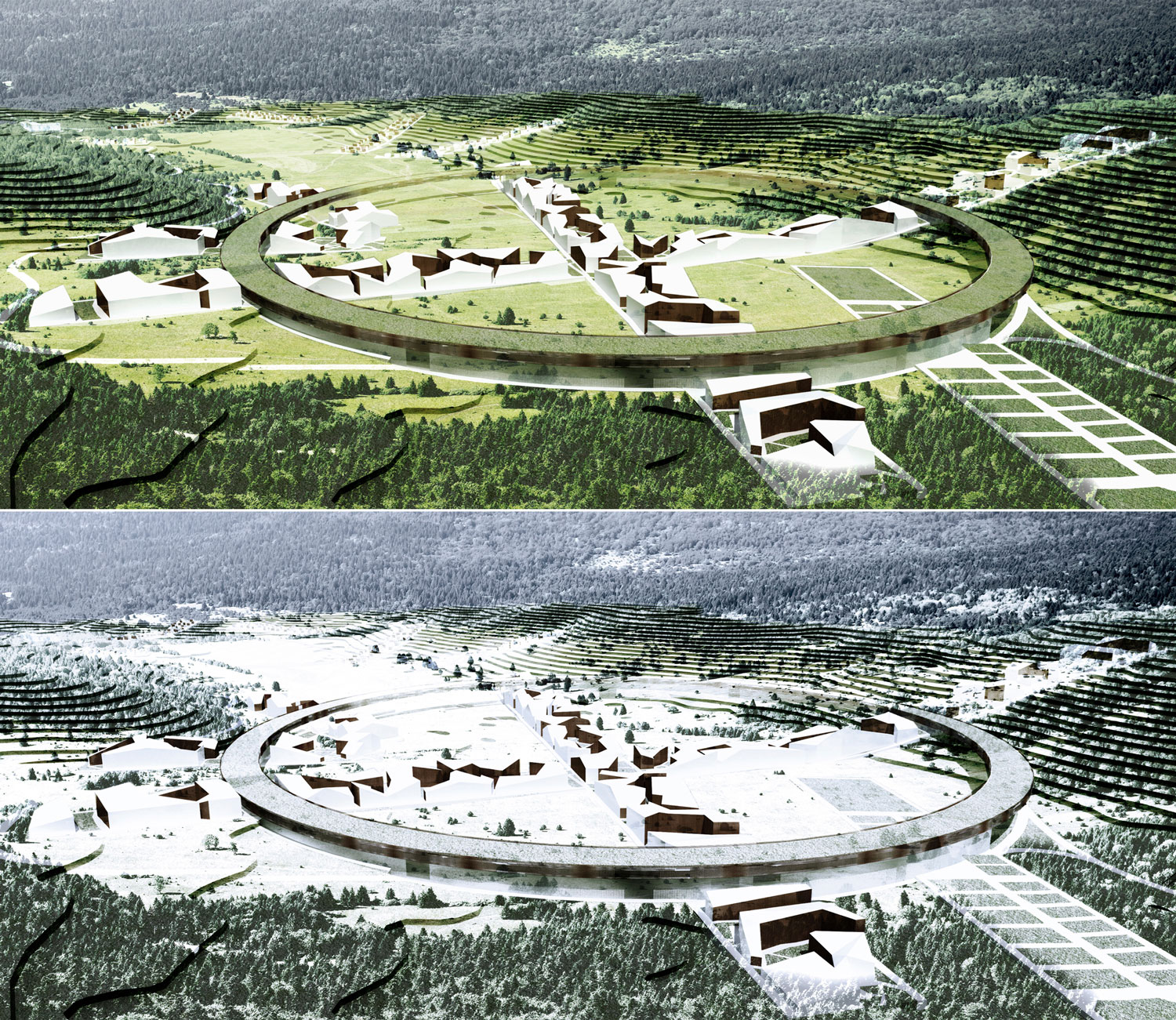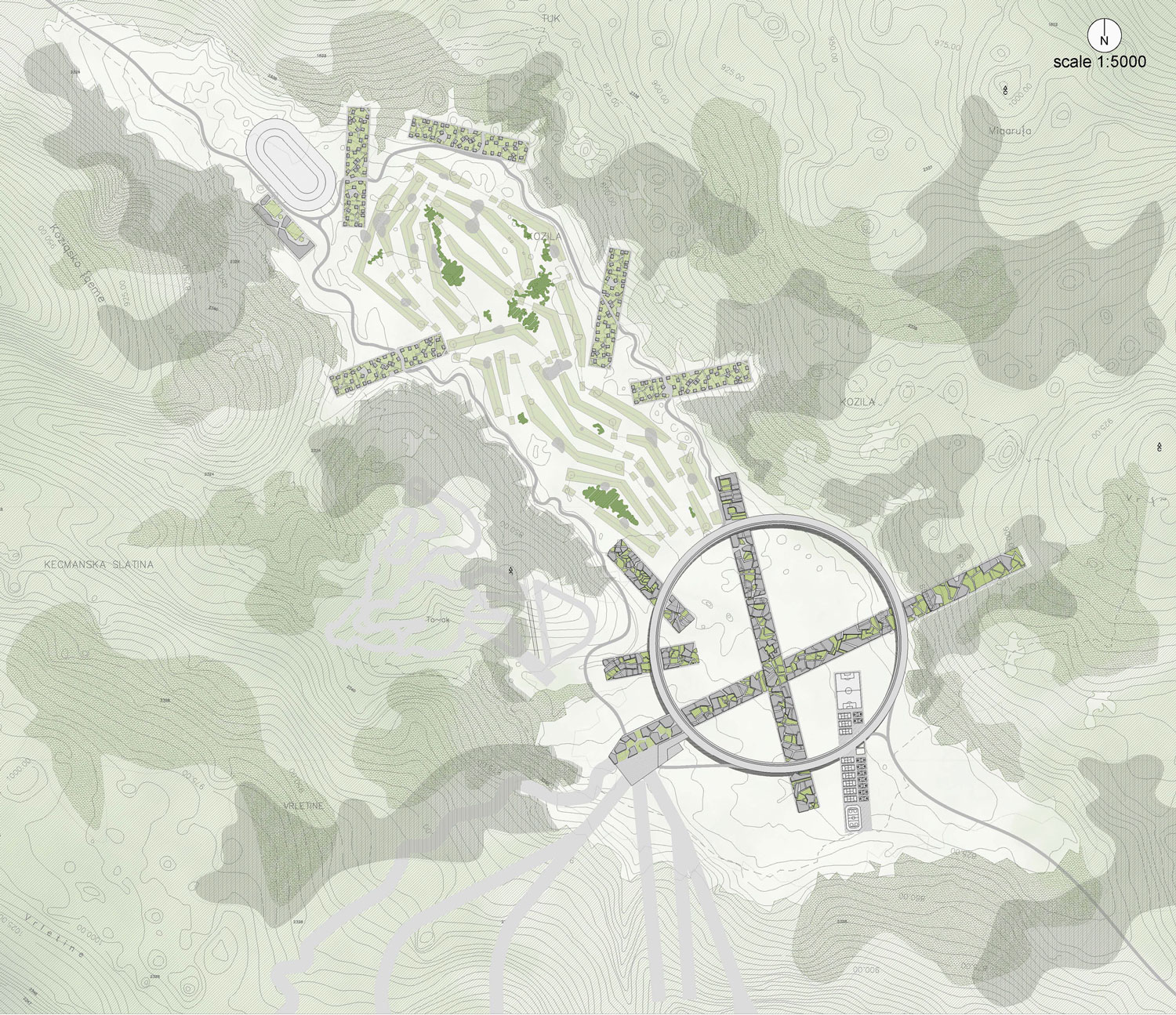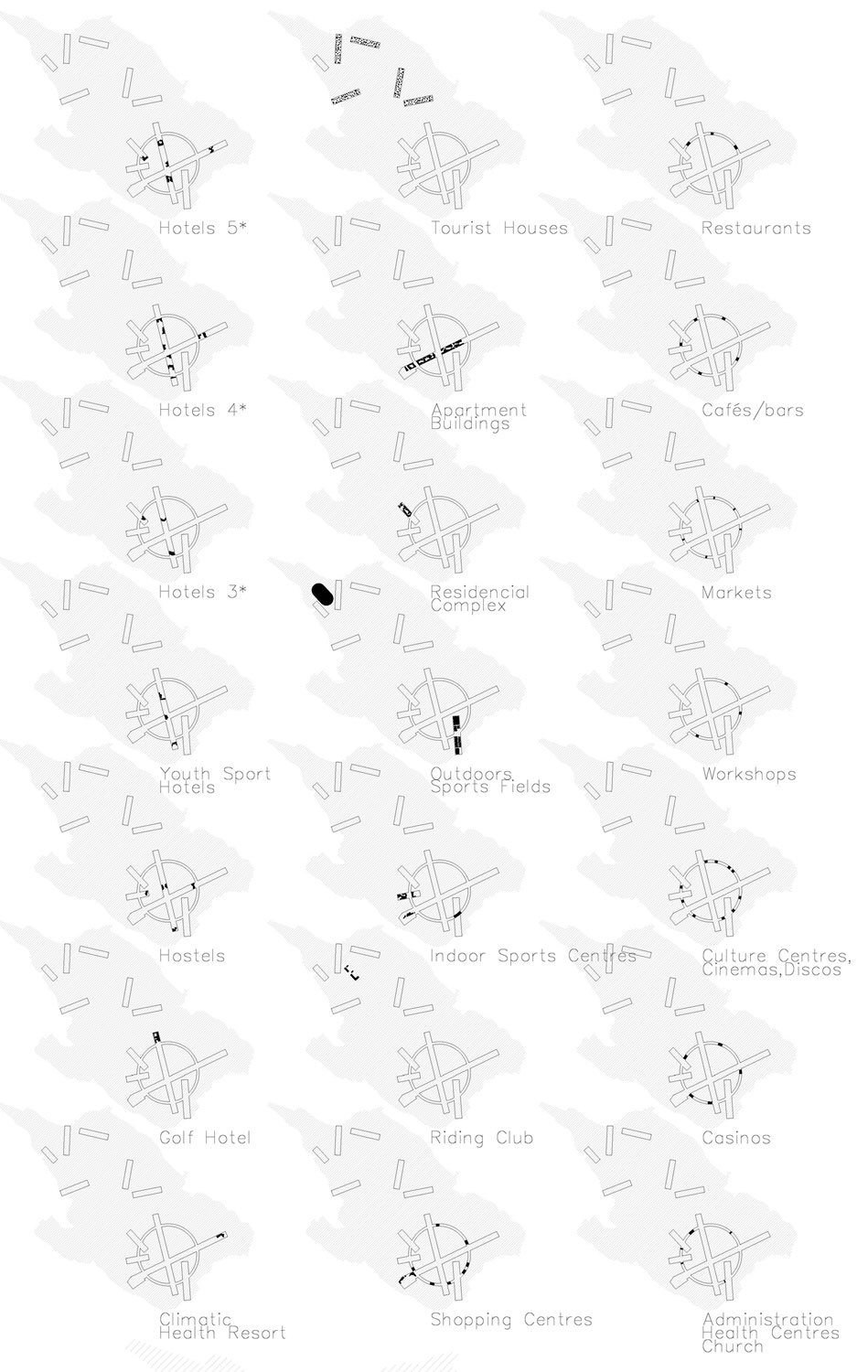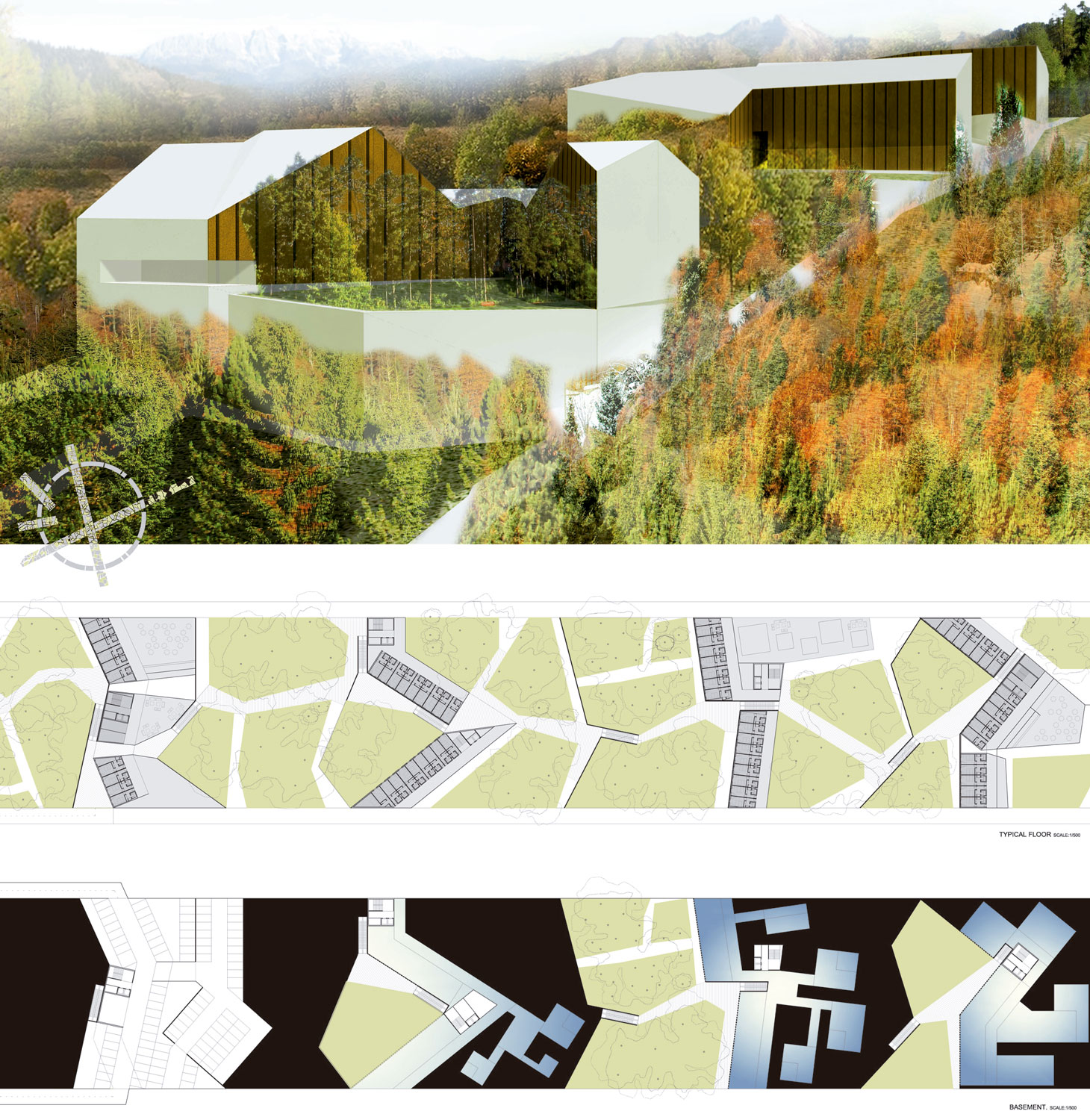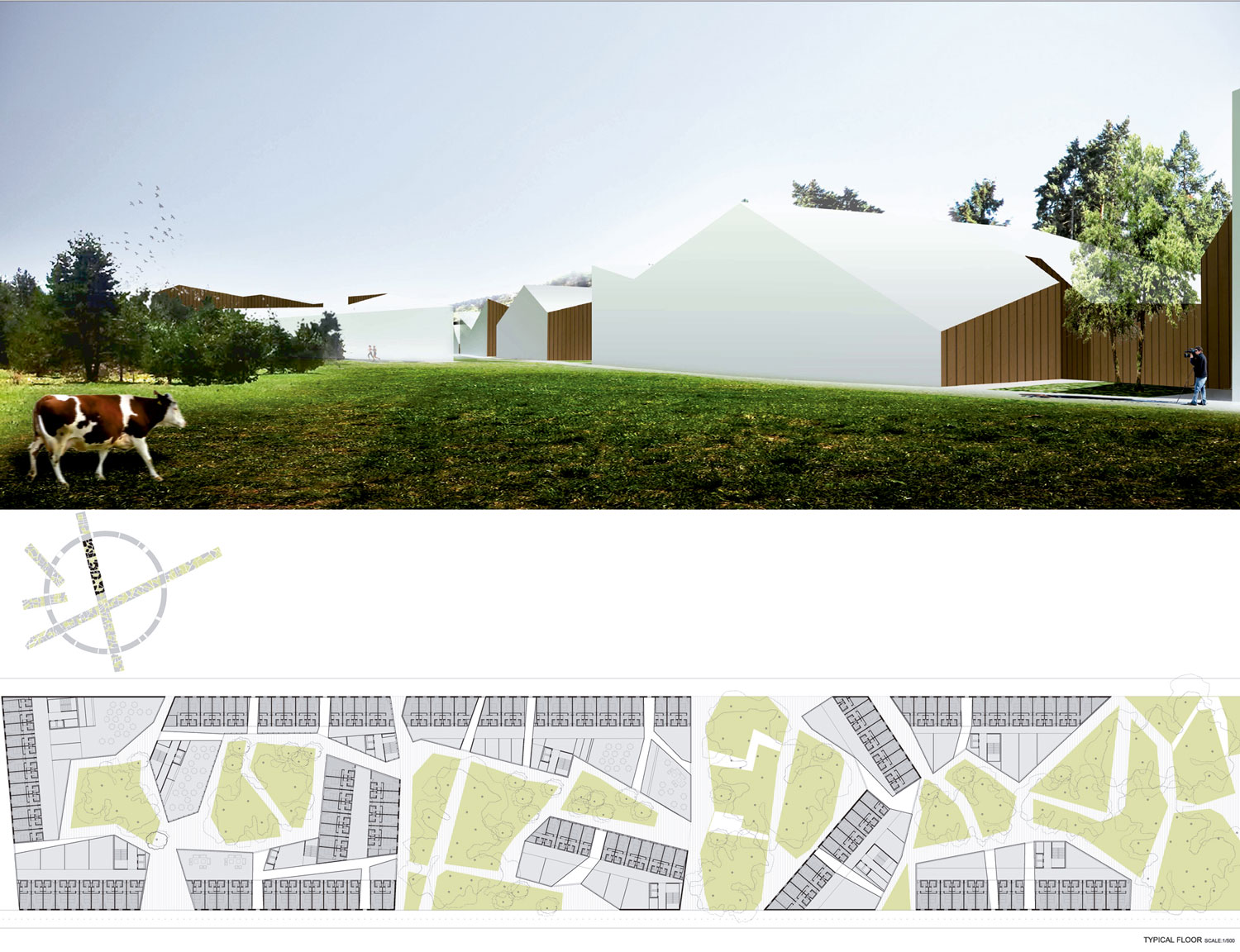1955-S60-BA-2014
Client: GB IMMO d.o.o
Status: Competition (2014)
Location: Klekovci, Bosnia and Herzegovina
Climate: Continental, Temperate
Material: Undefined
Environment: Mountain
Visualizer: Studio
Scale: 3.830.000 ㎡ Extralarge
Types: Masterplan, Public space
The purpose of the Competition is to obtain the preliminary urban and architectural design for the future urban zone of the Klekovaca Tourist Centre on Klekovaca Mountain.
Klekovaca Mountain is located in the western part of Bosnia and Herzegovina and belongs to the central part of the Dinaric Arc – Southeast Europe region. Its highest peak is Velika Klekovaca (1.962m) and it stretches in a north-westerly to south-easterly direction, covering a distance of 43 km.
The competition site is a part of the larger complex of the Klekovaca Tourist Cen-tre. It is located at the foot of the Klekovaca Mountain, on the Kozila Plateau, at 805 to 895 metres above sea level, covering an area of 383ha with a planned accommo-dation capacity of about 15,000 beds.
Concept
The aim of the proposal is to create a place with a distinctive identity and integrated into the natural environment.
The purpose of the proposal is to create a Touristic centre on the Klekovaca Mountain which will offer the facilities for both winter and summer mountain breaks. The proposal aim is to maintain to the maximum the natural environment as well as to highlight its beauty. The proposal is also going to reflect the mixture of traditional urban grids with contemporary quiet buildings which have as an aim to create a homely environment for the visitor, and to accomplish synergy of the visual quality of the landscape, open spaces and architecture.
Our proposal is an experimental hybrid between urbanism and landscape design: City and Nature overlapped in the simultaneous coexistence of a recreational open landscape of urban stripes superimposed on an urban neighborhood of walkable streets, plazas and Parks.
The concept of the propasal reflects the most striking features of the neighboring territories, allowing to combine the characteristic elements of local architecture with existng lanscape, thus creating a hybrid landscape and the connection between the urban structure and nature.
We propose a design contextually sensitive in order to integrate local cultures (traditional urban grid) and nature and create new artistic value on all spatial levels and relations. Taking on account the spatial and visual quality of integration of the urban zone of the Tourist Centre into the environment, quality of harmonisation between different zone units within the Complex, and visual quality of individual spaces and facilities.
The project is planned to respect the key values of the context, especially of untouched nature, and to create an innovative and advanced model of organization and operation of a tourist resort, and also to emphasize visual qualities of architecture, open public spaces and landscapes.
The proposed Touristic complex includes a ring and different separated stripes which consist of series of different shaped buildings integrated in an urban grid related to the traditional towns of the area. The design result is like a small city´s urban grid housed inside abstract stripes creating a landmark villa.
The complex is organized along a circular building of retail, entertainment and facility programs. Over the ring building bicycles, peatons and sikiers, among and electric public transport bring visitors quickly around. The vast accessible roof features gentle sloping surface allowing visitors to experience the panoramic views of the Mountain landscape.
The proposal is an urban form combining dense city inside the stripes with open landscape and will become a touristic gathering point for the surrounding cities and countries. Like a city that is carved and sculpted into the landscape, the entire facility is linked by an accessible ring with a green roof which includes recreational areas and facilities.
Our proposal is intended to provide the complex of a structural network of open public spaces of various sizes, forms, key motifs, as well as a combination of activities and equipment that will be well connected, legible and accessible to different users by the main facilities ring proponed.
The project for the Tourist Centre in the Klekovaca Mountain will be based on services and facilities during the winter and summer seasons, with the aim of maximising usage of the tourist infrastructure during the entire year.
The Kozila plateau is a vast undulating field. During the summer this field is covered with flowers. It is surrounded by walls of spruce and pine forests on one side and aspen boskets on the other. During the Winter all the Plateau is a white carpet delimited by the pine forest.
Winter: White
During the winter the roof of the ring will act as an extension of the ski slopes, allowing skiers to get access to different areas of the resort (hotels, apartaments, etc..)
Winter mountain break includes: skiing (Alpine and freestyle) Nordic skiing with biathlon, snow-board parks, ski schools, sledging (freestyle, in snowmobile or sleigh), sliding, snow park for beginners (children), winter mountaineering and hiking. During the winter season the focus is mostly on recreational activities, with the possibility of organizing winter sports competitions.
Summer: Green
During the summer the roof of the ring is a green carpet which allows bycicles, peatons and summer skiers to move freely inside the touristic complex.
Summer mountain break includes: a gondola ride, mountaineering and hiking, cycling, horseback riding, carriage rides, sports activities (basketball, football, volleyball, handball, tennis etc.);
Program
We propose to mix the different uses within the bands in order to create parts of the city with access to different activities.The ring contains the public and recreational uses, while housing and residential uses are inserted in the bands creating urban areas high density alternating with green areas and open spaces.
Traffic
To increase the quality of transport solutions inside the complex we propose an underground system of traffic communications. Visitors can get to its own hotels or apartments through the basement and the ring acts as the main street for communications inside the touristic complex.
This solution tries to minimize the impact of traffic in the landscape and to create a mobility model based on sustainability, innovation, energy efficiency and environmentally sensitive.
It is also proposed a public system of transport along the ring to provide accesibility for all the visitors to all the different areas using safe Systems of transport and low energy consumption.
Phases
Phased development The development of the complex is planned to be achieved in three phases. The design aims to provide an adequate response to the challenges of long term development which implies defining the following strategies:
– Phased development and organic development of the complex which in each phase of its development provides a high level of quality and diversity of the spaces, activities, experiences and services.
– Flexibility and adaptability of the design solutions to changes.
Sustainability
The project intend to create an atmosphere which would provide tourists with the ability to enjoy the natural beauty of the mountain region, its favourable climate, hydrology, flora and fauna and anthropogenic culture.
The development of the Project for Tourist village on Klekovaca Mountain will be based on the concept of sustainable tourism, with maximum respect and protection of the natural resources of the location. Our proposal aim is to build a place with a distinctive identity which harmonises the requirement of cost-effectiveness and environmental and social sustainability by using the latest technological advances in order to allow low energy buildings.
We propose minimising negative impacts on the environment and maximising the level of energy efficiency using the logic and quality of the distribution of functions and planned facilities,
Minimisation of negative impacts on the environment, while achieving a high level of energy efficiency
It is proposed the application of bioclimatic principles in planning and designing the tourist resort and utilising alternative energy sources like solar, wind and biomass energy for the urban and architectural development.
This tourist centre is designed as a laboratory for sustainable technologies, and a showcase for viable green tech implementations that does not only save energy, but also improves the quality of the urban environment. The large range of touristic and sport programs like spas, skiing hill, swimming pools and much more form an urban ecosystem where resources are fed from one into another. Waste heat from retail is channeled into leisure spas, water is reused as irrigation for the green areas, and the complex will be providing itself district heating and cooling. The entire facility is designed to be powered with a combination of solar, biofuel and geothermal energy.
With private courtyards and gardens (Hotels and residencial resorts) aligned with the spaces between buildings and bioswales preventing potential water overflow, this bio-integration of architecture and natural landscape will define a new development paradigm for Klekovaca tourist centre that maximizes density, value and returns, both ecologically and economically. Exhibiting sustainable designs that embrace vernacular landscapes, the proposed architecture draws from the lushness of the local landscape and gives both beauty and function back to its surroundings.
